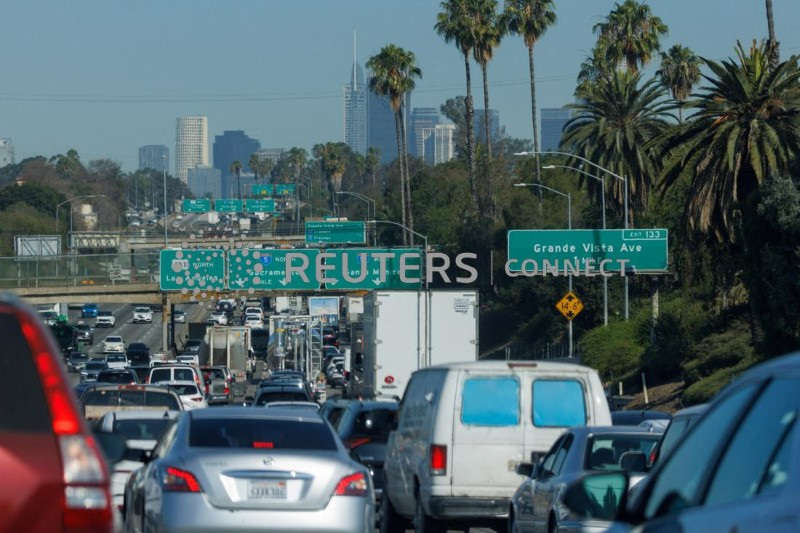By David Shepardson
WASHINGTON (Reuters) -U.S. auto safety regulators on Monday proposed expanding and enhancing reminder systems to boost seat belt use and reduce traffic crash deaths and injuries that have been rising in recent years.
The proposed new warning system by the National Highway Traffic Safety Administration (NHTSA) would extend to both rear seat and front seat passengers and expand current warnings for the driver. It would apply to passenger cars, trucks and most buses that weigh 10,000 pounds or less.
The proposed regulations come more than a decade after Congress in 2012 directed the agency to consider mandating the systems for rear passengers, and they will likely take at least a year to finalize.
Seat belt warning systems, currently required only for the driver's seat, use visual and audible alerts to encourage seat belt use.
The agency estimates the proposed requirements, which would also increase the duration of current warnings, would prevent over 100 traffic deaths and about 300 non-fatal injuries yearly.
The proposal comes as U.S. traffic deaths have jumped dramatically since the COVID-19 pandemic.
Acting NHTSA Administrator Ann Carlson said nearly half of the 43,000 people killed in traffic crashes in 2021 were not wearing seat belts.
"This proposed rule can help reduce that number by getting more to buckle up," she said in a statement.
NHTSA has estimated seat belts saved 329,715 lives between 1960 and 2012 — more than all other vehicle technologies combined, including air bags.
NHTSA's proposal would require visual warnings on vehicle startup to last at least 60 seconds to notify the driver of the status of the rear seat belts, and an audio-visual warning lasting at least 30 seconds if a rear seat belt is unbuckled while the vehicle is in operation.
That's significantly more than the current eight-second requirement for the driver’s seat belt warning.
Manufacturers would have flexibility to adjust warning signal characteristics to make them effective and acceptable to vehicle owners, NHTSA said. Car companies would have at least two years to comply with a final rule mandating rear seat warnings, the agency said.

NHTSA said seat belts reduce the risk of fatality for rear seat occupants by 55% for cars and 74% for sport utility vehicles.
A group representing major automakers did not immediately respond to a request for comment.